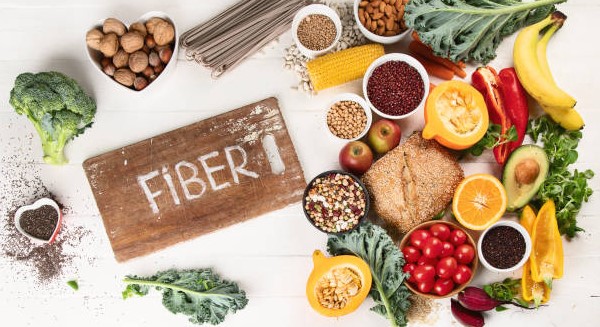A recent survey showed that over 40% of Americans experience disruption in their daily lives due to digestive troubles. Even more, 19% of Americans have had to stop routine activities like exercising and running errands because of uncomfortable bowel symptoms like diarrhea.
While talking to your doctor about ongoing symptoms is essential, you can still take charge of your diet. Eating high-fiber foods to stop diarrhea is one way you can improve your digestive health. Although it may seem overwhelming, you just need to learn what foods to incorporate into your diet.
Keep reading this guide to learn about the best high-fiber foods to stop diarrhea and get your digestive system back on track.
Overview of Fiber
It’s first essential to understand more about fiber and its role in your digestive health. Fiber is actually a type of carbohydrate found in plant-based foods that your body can’t fully break down. There are two different types of fiber, known as insoluble and soluble fiber. Insoluble fiber passes through your digestive tract intact since it doesn’t absorb water.
Soluble fiber binds to water in your digestive tract and becomes gel-like while moving through your intestines. Soluble fiber reacts with your good bacteria and goes through various chemical changes, which produces short-chain fatty acids. Short-chain fatty acids play a crucial role in your colon health, helping to balance out digestion. They’re also essential for decreasing inflammation and your risk for chronic conditions like type 2 diabetes.
Fiber-rich foods include vegetables, fruits, seeds, and nuts. You’ll tend to get a mix of both types of fibers with these foods.
Can Fiber Decrease Diarrhea?
Both types of fibers have various effects on diarrhea and your digestive health. Soluble fiber can help with both constipation and diarrhea. For example, taking soluble fiber supplements like psyllium can help to soften hard stools and reduce constipation symptoms. However, these supplements also help improve the overall consistency of loose stools since they soak up extra water.
Soluble fiber can even help diarrhea associated with digestive conditions like irritable bowel syndrome (IBS).
Insoluble fiber can help add bulk to your stool, acting as a natural laxative. It can also help with how quickly food passes through your digestive tract.
High-Fiber Foods to Stop Diarrhea
Now that you know more about how fiber works, you’ll need to learn more about foods high in fiber. Adults should get at least 21 to 38 grams of dietary fiber each day and include a mixture of both insoluble and soluble fiber.
Here are some of the best high-fiber foods to include in your diet:
Black Beans
Black beans have a fantastic flavor and give your dishes that meaty texture you crave. They’re also an amazing source of fiber, with one cup containing 5.4 grams of soluble fiber.

Black beans have pectin, a type of soluble fiber that takes on a gummy-like consistency in water. Due to this, pectin delays stomach emptying and makes you feel fuller for longer.
Lima Beans
Lima beans, also called butter beans, are greenish-white beans that make a very healthy addition to your diet. They also contain pectin and a large amount of soluble fiber, approximately 5.3 grams per 3/4 cup.
Remember, raw lima beans are toxic. You must soak them and boil them thoroughly before eating them.
Avocados
Many people overlook avocados as being a good source of fiber. In fact, avocados are an excellent way to get healthy fats, potassium, vitamin E, and fiber. One avocado will give you around 13.5 grams of fiber. Additionally, avocados are a good source of both insoluble and soluble fiber.
Sweet Potatoes
Sweet potatoes are delicious and high in fiber, potassium, and B vitamins. It’s also a significant source of vitamin A. You can add just one sweet potato to your diet and get at least 4 grams of soluble fiber.
Broccoli
Broccoli is a cruciferous vegetable that you can find available in any season. It’s high in potassium and vitamins K and C. It’s also a fantastic source of soluble dietary fiber. With every 1/2 cup of broccoli, you’ll get around 1.5 grams of soluble fiber.
Other Foods
Other foods that are good sources of fiber you can consider adding to your daily diet include:
- Brussels sprouts
- Turnips
- Pears
- Kidney beans
- Figs
- Nectarines
- Apples
Good sources of insoluble fiber include peas, raw cauliflower, and dark leafy greens. Blackberries, nuts, and whole grains are also good options.
Fiber Supplements
Taking fiber supplements along with fiber foods can be a great way to boost your fiber intake overall. Deciding what type of fiber supplement to take can be confusing since so many are available.
In general, you should look for specific ingredients that can help with diarrhea, like:
- Chia seeds
- Flaxseeds
- Inulin
- Acacia fiber
- Psyllium
Remember that fiber supplements don’t give you the necessary minerals and vitamins. It’s essential to ensure you’re eating a healthy diet that consists of nutrient-dense foods.
You can check out the best fiber supplement for women to get started.
What to Watch for When Taking Fiber for Diarrhea
Even though fiber is good for your digestive health, you’ll need to increase your fiber over time. Taking too much fiber at once can cause symptoms like:
- Cramps
- Stomach pain
- Gas
- Bloating
Be sure to drink plenty of water so that you stay hydrated. If you have any health conditions or are taking prescription medications, talk to your doctor before taking any supplements.
Remember, although diarrhea is often due to eating certain foods, you still need to monitor how frequently you have diarrhea. In most cases, it’s safe to manage occasional diarrhea at home.
However, you should see your doctor for an exam if you have ongoing diarrhea. Too much diarrhea can lead to dehydration and is a symptom of various digestive conditions.
Your doctor can recommend the best treatment in these cases.
Start Improving Your Digestive Health Today
Eating these high-fiber foods to stop diarrhea will ultimately help improve your digestive health overall. Remember, making significant dietary changes takes time to get used to. Go slowly, introducing one new food at a time. Don’t hesitate to talk to your doctor if you continue to have diarrhea.




